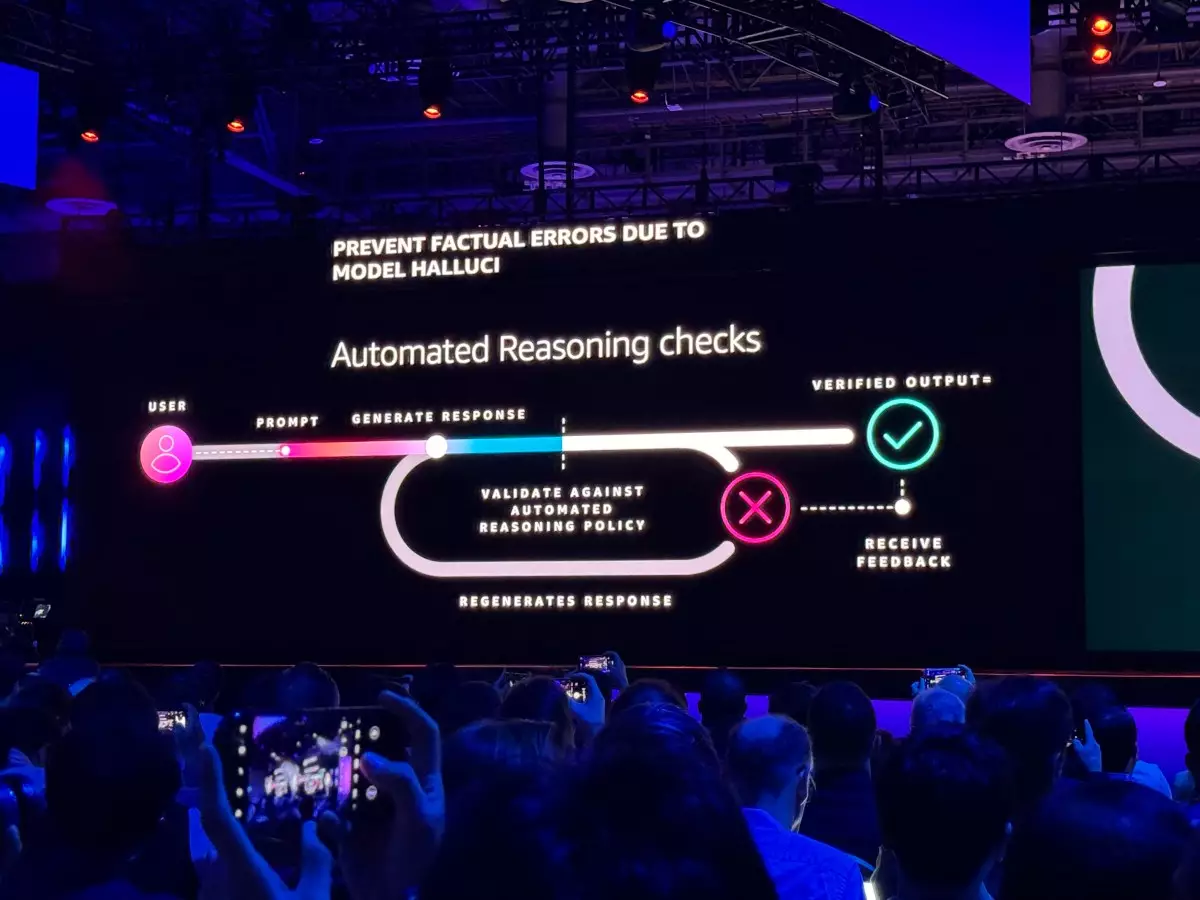AI hallucinations refer to the phenomenon where artificial intelligence models produce false, misleading, or nonsensical outputs. This issue arises from the inherent nature of AI systems: they are fundamentally statistical constructs designed to predict the next most probable output based on patterns identified in the training data. When driven by extensive datasets, these models can sometimes err, creating the impression of knowledge where none exists. This unreliability becomes particularly problematic in business applications and critical sectors, where inaccurate outputs can lead to significant consequences.
With the rise of generative AI technologies, the industry has witnessed a growing effort to address these shortcomings. As AI increasingly infiltrates various aspects of business operations, identifying and mitigating hallucinations is critical to enhancing the reliability of AI applications.
At the recent AWS re:Invent 2024 conference in Las Vegas, Amazon Web Services unveiled Automated Reasoning checks, a novel tool aimed at combating these hallucinations. This initiative could represent a decisive moment for AWS, which has long been a significant player in cloud computing but has faced heightened competition in the AI domain.
Automated Reasoning checks act as a verification layer for AI outputs, cross-referencing them with customer-provided information to ensure accuracy. By establishing a “ground truth” through data uploaded by users, the tool endeavors to enhance the fidelity of model-generated responses. This involves creating a set of rules to govern the response generation, ultimately refining and drawing from these established truths when discrepancies appear.
While AWS touts Automated Reasoning checks as the first safeguard against hallucinations, critics might argue otherwise. Notably, other major tech players like Microsoft and Google have already launched similar tools that aim to correct or validate AI outputs. Microsoft’s Correction feature and Google’s Vertex AI offer mechanisms to ground AI responses to factual accuracy, suggesting that the market is moving towards a more collaborative and interconnected approach to tackling hallucinations.
As the AI landscape evolves, AWS faces an increasingly competitive environment. Microsoft’s Azure and Google Cloud are aggressively developing AI tools that challenge AWS’s dominance. Even though AWS claims a substantial user growth rate of 4.7 times in its Bedrock service within a year, the fundamental question remains: Can Automated Reasoning checks genuinely differentiate AWS’s offerings from the competition?
The potential success of Automated Reasoning checks hinges on its practical implementation and reliability. As it stands, AWS has not disclosed empirical data validating the effectiveness of this tool. This lack of transparency raises skepticism about how well Automated Reasoning checks will truly function in real-world scenarios – a crucial aspect for enterprises seeking dependable AI systems.
Despite advancements in technology, AI models inherently lack the capacity to possess ‘awareness’ or ‘understanding.’ Instead, they rely on complex algorithms to sort through vast troves of data and extrapolate responses based on input patterns. This limitation reiterates the fundamental challenge: eradicating hallucinations entirely may prove as futile as attempting to eliminate hydrogen from water.
While Automated Reasoning checks could enhance the model accuracy, customers must remain aware that they are effectively being served a better-educated guess rather than definitive answers. The tool’s promise hinges on how well it can minimize the margin of error — a crucial factor in building trust in AI outputs.
In addition to the Automated Reasoning checks, AWS also introduced other significant tools at the conference, like Model Distillation, which allows users to transfer capabilities from larger models to smaller, more efficient ones. This option could enable businesses to leverage advanced AI functionalities without incurring escalating costs. However, there are caveats related to model selection, as distillation only works within certain family groups, which could limit flexibility for clients.
Furthermore, AWS showcased a new multi-agent collaboration feature intended to empower teams in managing AI-driven tasks. This system allows multiple AI “agents” to collaborate on components of larger projects, with a supervisory agent overseeing the workflow. While this feature may sound promising, the real test will be assessing its efficiency in practical applications.
As AWS pushes to refine its AI technologies, the dual challenge of effectively addressing hallucinations and navigating a competitive landscape poses unique challenges. Tools like Automated Reasoning checks may contribute positively, but success will rely heavily on execution, customer trust, and data-backed efficacy. In an industry where accuracy isn’t optional, the stakes continue to rise as companies seek reliable, trustworthy AI systems. As AWS and its competitors advance, only time will reveal how these efforts reshape the AI landscape.

